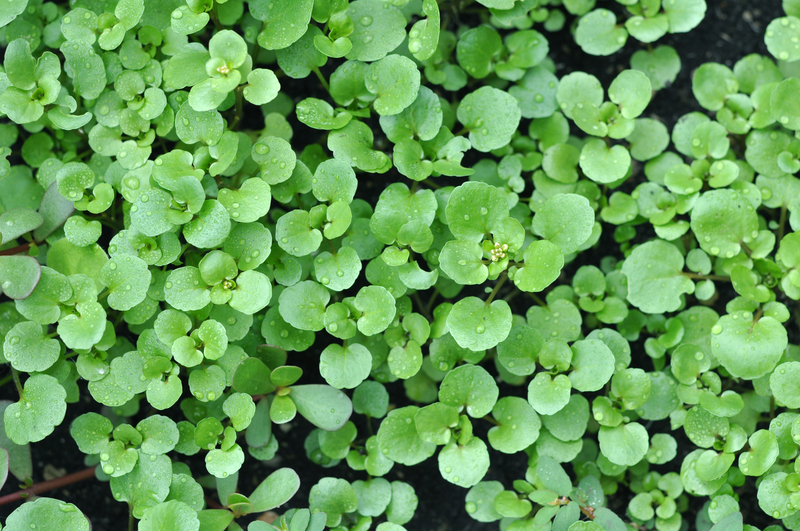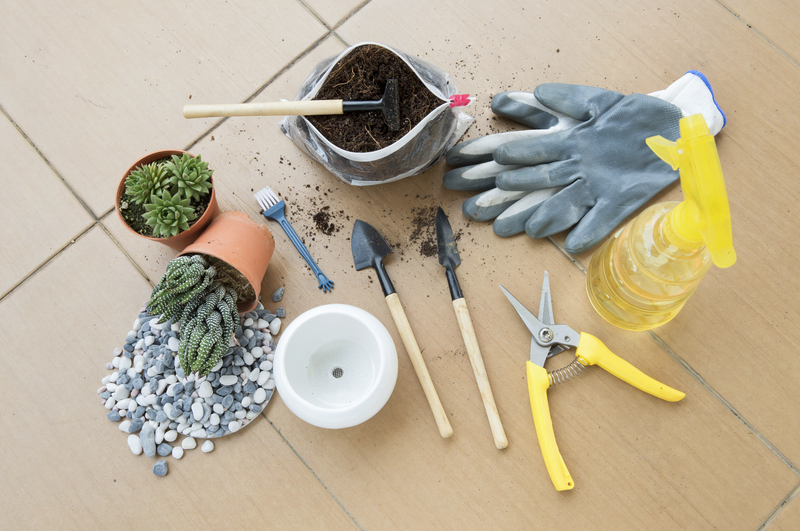The Ultimate Guide to Getting Rid of Tree Stumps Effectively
Are you struggling with unsightly tree stumps cluttering your yard? Whether you've had trees removed for landscaping or safety reasons, leftover stumps can be a nuisance. They can be trip hazards, attract pests, and hinder your gardening plans. Getting rid of tree stumps effectively is essential for maintaining your property's aesthetics and value. In this comprehensive guide, we'll explore the best methods for stump removal, their pros and cons, practical tips, and eco-friendly solutions, so you can reclaim your landscape with confidence.
Why Should You Remove Tree Stumps?
- Aesthetics: Stumps can be eyesores, disrupting the visual appeal of your garden or yard.
- Safety: They pose tripping hazards, especially for children and the elderly.
- Pest Prevention: Decaying wood often attracts insects such as termites, ants, and beetles.
- Stopping Regrowth: Some tree species can regrow from the stump, leading to unwanted shoots.
- Maximizing Space: Removing stumps frees up space for landscaping, gardening, or other home improvement projects.

Understanding the Basics of Stump Removal
Before diving into tree stump removal methods, it's important to recognize that not all stumps are created equal. Factors such as tree species, stump size, age, and root system complexity influence the method you should choose. Effective stump clearance combines the right techniques with safety precautions and sometimes professional help.
Factors Affecting the Stump Removal Process
- Tree Species: Hardwoods like oak and maple have denser stumps than softwoods like pine, making manual removal more challenging.
- Stump Size: Larger stumps generally require heavy equipment or chemical treatments, while smaller ones might be extracted by hand.
- Root System: Some trees, such as elms, possess extensive and deep roots, complicating removal tasks.
- Stump Age: Old, decayed stumps are typically easier to remove than freshly-cut ones.
Manual Tree Stump Removal Techniques
If you're dealing with small to medium-sized stumps and don't mind getting your hands dirty, manual removal is possible. This is a cost-effective DIY approach that requires basic tools and some elbow grease.
What You'll Need
- Shovel
- Pickaxe or mattock
- Axe or bow saw
- Hand pruning saw or loppers
- Steel digging bar
- Protective gloves and eye protection
Step-by-Step Guide to Manual Stump Removal
- Expose the Roots: Dig around the stump to reveal the major roots. The wider you dig, the easier it becomes to access and sever roots.
- Cut the Roots: Utilize an axe, saw, or loppers to cut through roots. Target the larger roots first for easier leverage.
- Loosen the Stump: Use a pry bar or digging bar to rock and free the stump from the soil. Continue cutting any remaining roots as necessary.
- Remove the Stump: Once it's loose, lift the stump out of the hole. For stubborn stumps, additional digging or root cutting may be needed.
- Fill the Hole: Backfill the hole with soil and tamp it down. Consider adding topsoil and grass seed for seamless landscaping.
Pros: Inexpensive, immediate results, environmentally friendly.
Cons: Labor-intensive, best for small stumps, can be time-consuming.
Using Machinery for Effective Stump Grinding
For large or stubborn stumps, stump grinding is one of the most efficient removal processes. This mechanical method reduces the stump below ground level, allowing you to plant, landscape, or build over the site.
How Stump Grinders Work
- Powered stump grinders feature a rotating cutting disc fitted with sharp teeth.
- The operator moves the grinder across the stump's surface, chipping away wood until the stump is shredded a few inches below ground level.
- Wood chips created during grinding can be used as mulch or disposed of accordingly.
Advantages of Stump Grinding
Stump grinding is a popular choice because it's fast, relatively safe, and results in minimal disturbance to the surrounding landscape. Additionally, it effectively prevents tree regrowth.
DIY or Hire a Professional?
- Rental: Home improvement stores often rent stump grinders. You'll need transportation, basic training, and safety equipment.
- Professional Service: Most arborists offer stump removal. Hiring a pro ensures full insurance, expertise, and rapid completion, especially for tricky or dangerous sites.
Stump Grinding Safety Tips
- Wear hearing protection, goggles, and sturdy boots.
- Review the user manual and practice with the controls before starting.
- Clear the area of rocks, debris, and bystanders before operation.
Chemical Tree Stump Removal Methods
If you wish to remove tree stumps without intensive manual labor or expensive machinery, chemical treatments can accelerate the natural decomposition of wood.
How Chemical Stump Removal Works
- Drill Holes: Use a power drill with a large bit to bore deep holes (about 8-10 inches) into the stump's surface and sides.
- Apply Stump Remover: Fill the holes with a commercial stump removal chemical, such as potassium nitrate. Read the label for dosage instructions.
- Add Water: Pour water into the holes to help the chemical penetrate and trigger decomposition.
- Wait: The chemical will break down the wood over several weeks or months. The stump will become soft and spongy, allowing for easy removal with an axe or shovel.
Pros: Low effort, minimal tools required, effective for hard or old stumps.
Cons: Takes time (weeks to months), not ideal if you need instant results, chemicals can affect nearby plants if not used carefully.
Burning Tree Stumps: Is It the Right Choice?
Burning stumps is a traditional method of stump eradication, but it has safety, legal, and environmental implications. In some regions, burning may be restricted or prohibited due to fire hazards. Always check local laws and obtain necessary permits before proceeding.
How to Burn a Tree Stump Safely
- Drill holes in the stump and fill them with potassium nitrate to accelerate burning.
- Pour kerosene (never gasoline) into the holes and let it soak in for a day.
- Use kindling to ignite the stump securely. Monitor the fire at all times and keep water or a fire extinguisher on hand.
- After burning, remove the ashy residue and fill the hole with soil.
Note: Burning is only recommended for hard-to-remove stumps in rural areas, away from structures and flammable material. Safety first!
Natural and Eco-Friendly Methods for Stump Removal
If you prefer environmentally responsible approaches, consider these eco-friendly stump removal strategies:
Encourage Natural Decay
- Cover the stump with organic compost, soil, or mulch to retain moisture and attract fungi, bacteria, and insects that break down wood.
- Keep the area damp and allow nature to gradually rot the stump over months or years.
- Speed up decomposition using high-nitrogen fertilizers or compost tea.
Using Epsom Salt or Rock Salt
- Drill holes into the stump and fill them with Epsom salt or rock salt.
- Add water to the holes to dissolve the salt deep into the stump.
- This dehydrates the wood and prevents regrowth, ultimately killing the stump over several months.
Stump Removal through Solarization
- Cover the stump tightly with a heavy black plastic tarp.
- The heat from direct sunlight accelerates decay and prevents water and air, further weakening the wood structure.
Advantages of Green Stump Removal Techniques
- No chemicals needed; safe for kids and pets.
- Low cost and minimal effort once set up.
- Improves soil health by allowing organic matter to decompose naturally.
Drawback: Takes months (or longer), and is best for those not in a hurry to clear the stump.
Preventing Regrowth and Root Suckers
Many trees, such as willows and elms, can send up new shoots from roots or the stump base. After tree stump removal, monitor the area for signs of regrowth. Promptly remove shoots, apply a targeted herbicide, or smother regrowth with mulch or plastic sheeting.
When to Hire a Professional Stump Removal Service
For large, multiple, or hazardous stumps, or when the stump is located near utilities or buildings, it's wise to call an expert. Licensed tree care professionals are equipped with specialized machinery and the experience to complete the job efficiently and safely.
Benefits of Hiring a Pro
- Quick, thorough removal with minimal landscape disruption.
- Fully insured for accidental damage or injury.
- Advice on root removal, landscaping, and site restoration.
How to Choose a Stump Removal Company
- Check credentials, insurance, and online reviews.
- Request written estimates and discuss the method to be used.
- Confirm cleanup and site restoration services are included.

Frequently Asked Questions About Removing Tree Stumps
How long does it take for a tree stump to rot naturally?
It can take anywhere from 3 to 10 years for a tree stump to decompose on its own, depending on wood type, climate, and exposure.
What is the fastest way to remove a stump?
Stump grinding or professionally facilitated removal is the quickest method, usually completed within a few hours.
Can I plant a new tree where the stump was removed?
Yes, but it's best to remove as much root mass as possible and add fresh, fertile soil to ensure successful growth of a new tree.
Is it safe to use chemicals for stump removal?
Commercial stump removal products are generally safe if used as directed, but keep them away from children, pets, and desirable plants. Always follow local environmental guidelines.
Final Thoughts: Reclaiming Your Landscape
Getting rid of tree stumps effectively is an important step in managing your yard's beauty, safety, and long-term health. Whether you choose manual, mechanical, chemical, or eco-friendly strategies, there's a method to suit every situation and budget. Assess your needs, follow safety guidelines, and never hesitate to seek professional assistance for best results.
Ready to reclaim your outdoor space? Use the stump removal methods outlined in this ultimate guide and transform your property for the better. With patience and proper technique, unsightly stumps will be a thing of the past!